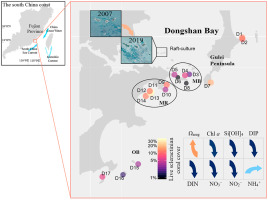Here's a topical read that was published August 23rd, 2023: https://www.nature.com/articles/s41586-023-06442-5#:~:text=Corals feed on symbionts to,through feeding on the symbionts.
The Reef builders summary: https://reefbuilders.com/2023/08/24/study-reveals-how-corals-gain-n-and-p-in-darwins-paradox/
Long story short, corals need P & N for growth. They can feed on particulates, aminos or uptake ammonia, however they cannot directly uptake NO3 or PO4. Luckily the zooxanthellae can. So when particulates foods are absent, the coral consume their own zooxanthellae to get their fix of P & N. In a PO4&NO3 depleted system, the zooxanthellae can't reproduce fast enough and the coral effectively cannibalizes its self. In the study they did, they found coral growth in a nutrient limited system stagnated around 50 days and these coral lost more than half of their symbiont zooxanthellae. By contrast, in the nutrient-replete system, the corals grew and calcified at an exponential rate and symbiont density remained constant.
In the study:
Nutrient Rich = [NO3] ≈ 12 µM, [PO4] ≈ 3 µM
Nutrient Limited = [NO3] ≈ 0.7 µM & [PO4] ≈ 0.13
What was interesting to me was that in the study PO4 of 0.13 is "limited". Think most would agree NO3 of 0.7 is low, (currently struggling with that myself) but I imagine many would consider PO4 of 0.13 to be standard, maybe even high.

The Reef builders summary: https://reefbuilders.com/2023/08/24/study-reveals-how-corals-gain-n-and-p-in-darwins-paradox/
Long story short, corals need P & N for growth. They can feed on particulates, aminos or uptake ammonia, however they cannot directly uptake NO3 or PO4. Luckily the zooxanthellae can. So when particulates foods are absent, the coral consume their own zooxanthellae to get their fix of P & N. In a PO4&NO3 depleted system, the zooxanthellae can't reproduce fast enough and the coral effectively cannibalizes its self. In the study they did, they found coral growth in a nutrient limited system stagnated around 50 days and these coral lost more than half of their symbiont zooxanthellae. By contrast, in the nutrient-replete system, the corals grew and calcified at an exponential rate and symbiont density remained constant.
In the study:
Nutrient Rich = [NO3] ≈ 12 µM, [PO4] ≈ 3 µM
Nutrient Limited = [NO3] ≈ 0.7 µM & [PO4] ≈ 0.13
What was interesting to me was that in the study PO4 of 0.13 is "limited". Think most would agree NO3 of 0.7 is low, (currently struggling with that myself) but I imagine many would consider PO4 of 0.13 to be standard, maybe even high.




















